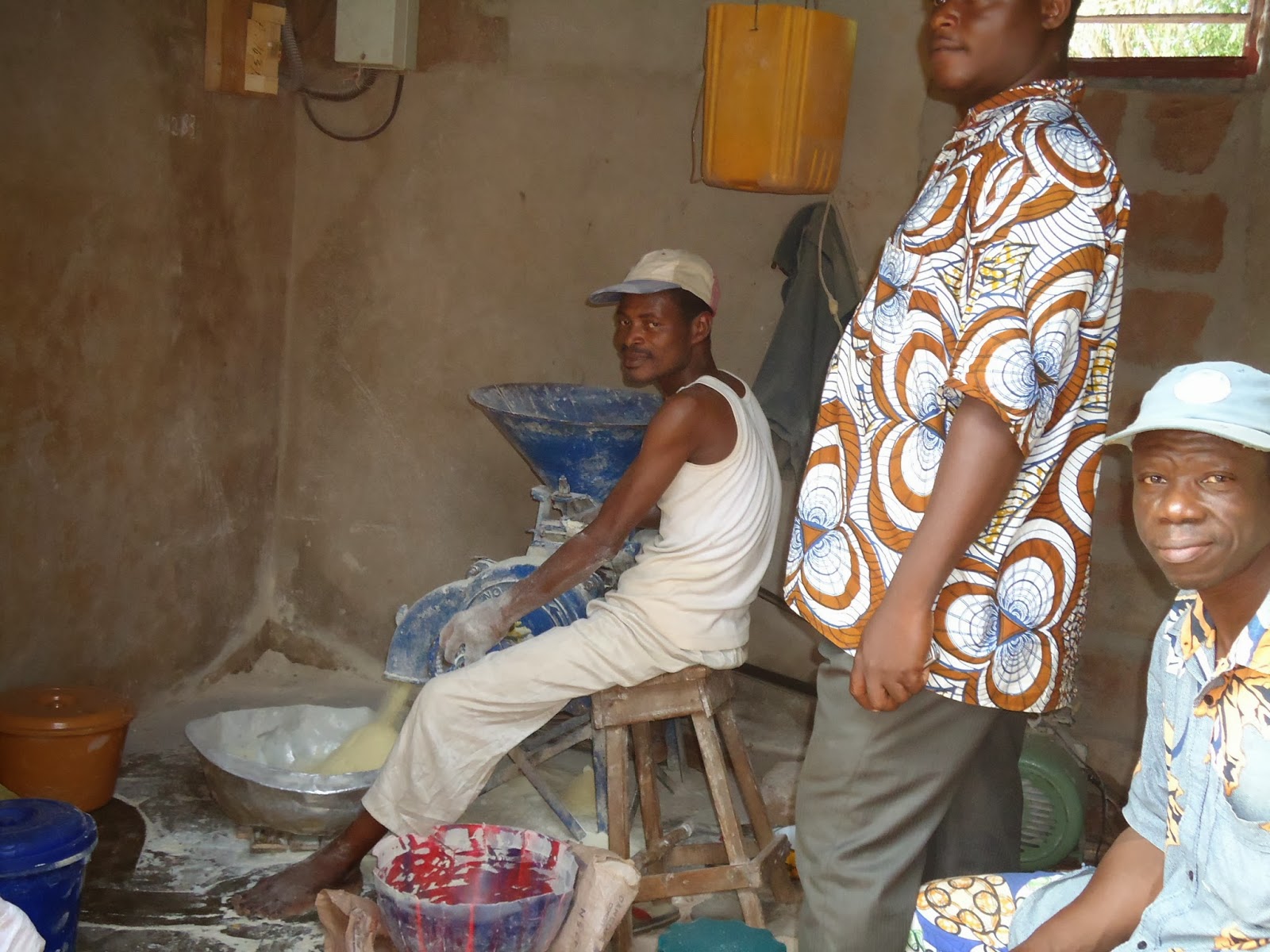 | ||
| Along the way to the village we came across these cattle and the herder. Talk about open range! |
The village started receiving electricity in 2009, thanks to two private companies from Germany and The Netherlands. It was the first of over 100 villages in Benin slated to have electricity brought out to them. The village consists of about 3,000 people, living in smaller grouped mini-villages. Our path led us through the collection of huts and houses.
 | |
| The house on the left has an antenna of some sort. |
Uli, the Hash Hare for the day (the hare sets up the trail) works for the German company that set up this village. The electricity is used mostly for lights and entertainment. The village school teacher has a fan and a computer as well. The houses have meters attached to them that require the user to purchase a pre-paid card. The card is inserted into the meter and then the electricity is sent to the house. Unfortunately the users also divert some of the electricity to other unauthorized lines (dangerous to do and touch). This diversion of electricity lessens the strength (?) of the electricity coming in to the original user's house, so they get less than what they paid for.
.JPG) | |
| The small wires to the left of the meter are used to share the electricity with unauthorized users. |
One part of village life that hasn't been affected by the introduction of electricity is running water. Villagers still walk to wells throughout the larger village are and collect water that way. Norbert, our Hash leader, who works for the same German company as Uli, informed us that perhaps two-thirds of the water is contaminated in some way, leading to incidences of cholera and other water-borne illnesses.
.JPG) |
| Uli's daughters watch while the water is hauled up. |
.JPG) |
| I'm thinking he's carrying maybe 15 gallons of water. He must not have any sisters, because collecting water is a female responsibility. |
We had a local guide, Passcal, from the village lead us to the mini-villages. His presence on the trail with us helped us to feel more welcome and accepted with the villagers. He showed us signs of vodun (voodoo) that is heavily practiced in the area. Here is an altar, on which chicken sacrifices were used to appease the spirits
There were also signs hanging from the trees to warn people not to enter parts of the forest.
Our final destination before heading back to the cars was to deliver some goods to some of the matriarchs of a mini-village. We brought cans of tomatoes and sugar for their use. They certainly could use much more, but in the conditions the villagers live in, practicality is important. The tomatoes will be used for making the sauce served with their version of mashed potatoes. This village uses corn meal as the basis for that staple.
.JPG) |
| A collection of huts and chickens, always lots of chickens! |
The land surrounding the mini-villages is used for farming. We saw many different crops being grown, mainly maize (corn). But there were also large gardens of pineapple, as well as groves of bananas and papaya.
 |
| This garden plot is terraced because of an incline, a rare find in and around Cotonou! |
It was difficult to take pictures of the villagers, most of whom didn't want their picture taken. We did come across two separate church services, one of which was a group of Celestial Christians. Another was a more "traditional" church. They were using the electricity in the church for lighting and for electric instruments!
.JPG) |
| Dancing and singing inside the church. |
.JPG) |
| Some people were just hanging out outside the church. |
We took about two hours to finish this Hash run/walk. We are learning that with this group of people, it's not about the exercise or the Hash rituals, but about getting together and learning the culture of the area. We feel fortunate to have found a fun group of people to do this with.





I love learning about Benin. These runs are so interesting. Thanks for blogging even though your connection is slow.
ReplyDelete